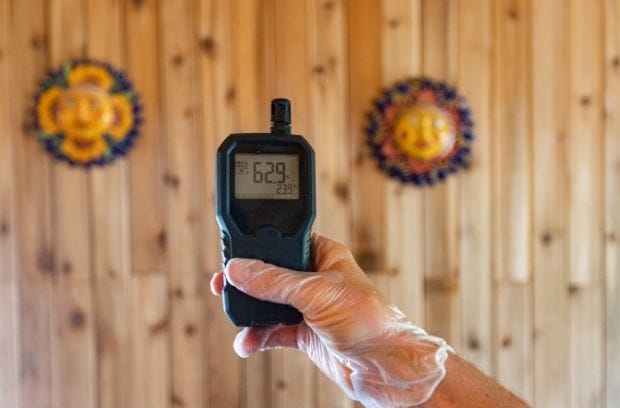You may not know it, but various indoor contaminants can infiltrate your home without you realizing it. We’ve put together a list of some of the major indoor pollutants you should test your house for to keep yourself and your household safe.
Carbon Monoxide
Carbon monoxide is odorless and colorless, but it can still be fatal if you’re exposed to high concentrations of it for a prolonged time. It’s one of the most dangerous pollutants that can come into your home, and its sources can range from a leaking gas stove or furnace to auto exhaust or unvented kerosene.
It’s strongly recommended that you install a carbon monoxide detector in your home if you have a gas stove or furnace—and it’s a good idea even if you don’t have gas appliances. Regularly testing your detector to ensure it’s accurately monitoring dangerous carbon monoxide levels in your home is also wise.
Nitrogen Dioxide
Another potentially harmful gas that can infect your household is nitrogen dioxide. Like carbon monoxide, nitrogen dioxide can come from combustion appliances such as gas stoves and kerosene heaters. You’re more likely to notice exposure to nitrogen dioxide, as it irritates the nose, mouth, and throat. If you have asthma, nitrogen dioxide can increase bronchial activity, so if you’ve noticed more asthma attacks at home, they could be from exposure to the toxic gas.
Pro tip: Most home gas detectors detect carbon monoxide, nitrogen dioxide, and other possible gases, so you’ll be covered with just one sensor.
Radon
Radon is a naturally occurring radioactive gas; trace amounts of it exist in the atmosphere. Outdoor radon is harmless, but if it gets trapped indoors, it can become a severe health problem for the household. Studies have shown that breathing air with higher concentrations of radon can increase your risk of lung cancer. It’s recommended that you have a professional test your home for radon every two years to be safe.
Asbestos
Asbestos is a fiber that home-builders used to use for roof shingles and ceiling tiles because of its heat resistance. But when asbestos is disturbed due to cutting or sandblasting, it can get in the air. If you inhale its particles, it can cause damage to your lungs, increasing your risk of cancer and mesothelioma. If you’re renovating a house, you must know if you’re working with asbestos and use the proper protection.
These are a few of the major indoor air pollutants you should test your house for. Many of them you won’t notice until they negatively affect your health, so stay proactive with gas detectors and regular checkups of your home’s air quality.






